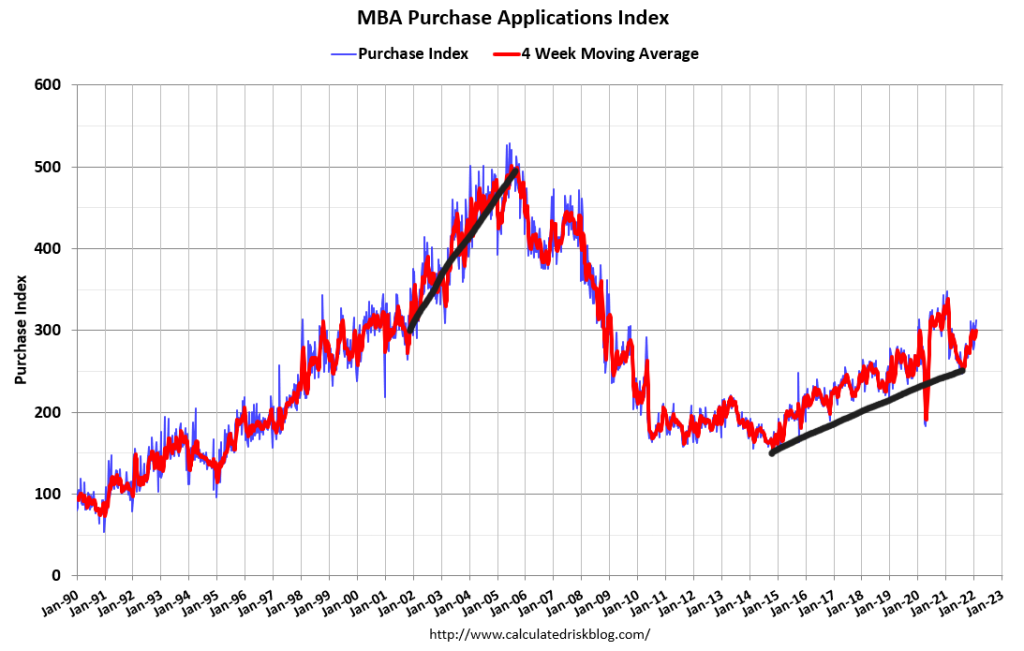Xavier brings up a great question that many rookies have been asking. We all know we can get a conventional loan with very low down payment requirements for an owner-occupied investment like a house hack, but what about a vacation rental? Before you bombard your mortgage lender with questions, listen to what Tony (short-term rental expert) has been using for his vacation rental financing.
If you want Ashley and Tony to answer a real estate question, you can post in the Real Estate Rookie Facebook Group! Or, call us at the Rookie Request Line (1-888-5-ROOKIE).
Ashley Kehr:
This is Real Estate Rookie, episode 156. My name is Ashley Kehr and I am here with my co-host Tony Robinson for another rookie reply.
Tony Robinson:
And welcome to the Real Estate Rookie podcast, where every week, twice a week, we bring you the motivation, the inspiration and we answer your questions about getting started in the world of real estate investing. So, whether you’re a rookie, whether you’re seasoned, we hope you get some value from today’s show and every show that we put out.
Ashley Kehr:
So Tony, what’s new with you today?
Tony Robinson:
Things are actually going pretty good. We’re off to a pretty good start for the new year. We’ve got two different rehabs that are in progress right now. Well, technically three, one’s down, but we’re waiting to sell. Anyway, we’ve got two that are like in the middle of being rehabbed, and I’m super excited for how those ones are going to turn out. One of them is so nice that we’re almost contemplating not selling it because we’re so emotionally now invested into this property. So, that’s going well. And then I actually just submitted an LOI today on a 33 unit motel. So, we’ll see how that one turns out.
Ashley Kehr:
I’m so excited for you on that one. I know you’ve been looking for a motel for a while to kind of turn into a little Airbnb for the different rooms. So, I can’t wait to hear what happens with that.
Tony Robinson:
Yeah, hopefully it comes back. The seller’s kind of being a, yeah, he’s being a tough negotiator, I’ll say. So, we’ll see what it comes back to be. But what’s new on your side?
Ashley Kehr:
Well, I finally closed on a property yesterday.
Tony Robinson:
Oh man. Has it been five years already?
Ashley Kehr:
I know. I have so much stuff under contract and nothing’s closing. So, finally closed on, it’s a little eight frame cabin, with three acres. And we’re just going to turn it into a short term rental. So, we have a lot of rehab to do it, but it’s only like 700 square feet. So, should be a pretty quick turnaround hopefully. But we went and did the final walkthrough yesterday and we got there with our agent in the lockbox, code wouldn’t work. So, we call the seller’s agent and she was just really fed up with this property. She’s like, “I don’t don’t know, just try and break in.” So, we end up leaving to go get some tools and coming back and having to bust open the door. And finally with couple smashes to the lockbox, we got that open.
But I guess in our contract, our real estate contract, it states that the driveway has to be plowed for the final inspection, for us to come and do that. Well, this is a kind of a steep, windy driveway and it wasn’t plowed super great. But we’ve learned that a couple days ago when they did have it plowed, the plow driver got stuck, the tow truck that came to pull the plow driver out got stuck. And they had to have a third towing company come or a second tow come. So, there was three trucks there and two were stuck and I guess it was a huge mess. But the owner, he wouldn’t even pay to have somebody plow it. So, the seller’s agent decided to pay for it, to get it done, to just make this deal close and get it over with. But then she ended up having to call these other tow companies and so it was a 1000 dollar bill that she’s having to foot now because the seller won’t pay it.
Well, when we were there yesterday, we were leaving all excited, we checked out the property, everything’s good, we’re about to close, we got stuck in the driveway. So, we call a tow company and they’re like, “Oh, I was just there a couple days ago.” Well, he comes to pull us out, a wire snaps on his truck and it’s just like a whole mess. So, we definitely need to figure out something with the driveway, that’s for sure.
Tony Robinson:
So if you’re watching this on YouTube, you’ll notice that Ashley’s actually still on that driveway. So, it’s been 24 hours and counting and she still hasn’t gotten off of that driveway.
Ashley Kehr:
It was actually funny though. While we were waiting for the tow truck, I actually made an Instagram reel. So, I probably never would’ve made it if I wouldn’t have gotten stuck in the driveway. So, if you like watching Instagram reels, you can go check it out @wealthfromrentals, because that’s what I did while we were stuck.
Tony Robinson:
Oh wait, really quick. So, you’re stuck, like, did you slide off to the side of the road and your tires couldn’t get up?
Ashley Kehr:
Yeah. Sucked off the driveway a little bit and then we’re rubbing up against trees almost. And we were in a truck, so the tow driver actually had to kind of wrench us out and pull us to the side and then we could get out, but yeah.
Tony Robinson:
Wow. Wild. So let me ask you this, what is your plan when you have guests coming? Is it still an issue if it’s plowed correctly or was it just an issue because it wasn’t plowed well enough?
Ashley Kehr:
Well, the worst part is having to back down it. It’s just such an awkward angle. And if you get off the driveway a little bit, you get kind of sucked down. It’s a little bit of a ravine, but there’s trees there. So, it’s not like you’re going to fall down the ravine if you’re going slow. But the plan is to actually… And this is how the driveway actually is. Just the plow driver that came that Saturday, I mean, we have two feet of snow almost, he didn’t know where the well was, different things like that. So, he just plowed enough to get somebody up there. But there actually is like a turnaround. So, we would have the driveway staked out, so that when somebody does come and plow that, they know exactly where they have to go to plow and what they need to stay in the lines of. And then that way a person can drive up and just turn around and not have to worry about backing up the driveway.
Tony Robinson:
Yeah. So, we just bought two new short term rentals. We just closed not too long ago. Actually, when you’re with me in Tennessee, the properties we were checking on, the one that you were on, right? The one like that driveway.
Ashley Kehr:
Oh yeah. That driveway.
Tony Robinson:
Yeah. It was a pretty steep driveway. And we had a guest the week afterwards who had a difficult time getting up. Our cleaner actually couldn’t get up because it had snowed and no one came to plow the road. So, she tried to go up and she kept sliding back down that road. So, this is our first time having to deal with snow plow, right? I live in California. I don’t know what snow looks like. So, we’re trying to develop a process, so that when it does snow, we can quickly get that road cleared. So, nice to hear what your plan is.
Ashley Kehr:
Yeah, definitely stake it out. I mean, in Tennessee, you probably won’t get that much snow, but-
Tony Robinson:
That much snow. Yeah.
Ashley Kehr:
Yeah. Makes it easier for the plow driver.
Tony Robinson:
Yeah. Cool. Well, what do we got for today, Ash?
Ashley Kehr:
So, I actually pulled the question for my DMs. So, today’s question is from Xavier Kelly. Hello, Ashley. I’m Xavier Kelly, rookie for the Baltimore Ravens. Go Bills! I was looking into buying my first investment property to Airbnb. Could I use an FHA loan without living in the property for a year? What’s the best way to scale with paying 20% to 25% down payment. So Tony, I actually know the answer to this question because of you. So, I am going to let you give the answer, since this is something you taught me.
Tony Robinson:
Yeah. So Xavier, great question. And this is something that comes up a lot. And this is actually one of the reasons why I love short term rentals, because the lending options that you have are a little bit better than what you can get for a traditional long term rental in the single family space. So, the way that we financed all of our short-term rentals is using a second home loan or a vacation home loan. This is a federally approved loan type for folks that want to go out and buy a property in a city that is not their primary city, where they live for their primary residence, you’re able to go out, buy a property. And the beauty of it is that you only have to put 10% down, 10% down, right? So our first Airbnb, we paid, it was a purchase price of $590,000, our down payment was 10% or $59,000, right? So, you’re literally putting down half, sometimes more than half of, or less than half I should say of what a traditional 20% down payment is.
So Xavier, I would encourage you to go out and find a lender that is familiar with second home loans or vacation home loans, something that they specialize in and you’ll make your money stretch a little bit further.
Ashley Kehr:
So Tony, what are the exact rules on that? So, if he’s purchasing in a town that he already lives in, possibly. Can he still get it, a vacation home mortgage on that property?
Tony Robinson:
Yeah. Great question, Ashley. So there are some limitations with the vacation home loan. The first limitation is that you cannot have one that’s in the same city as your primary residence, and you cannot have two second homes that are too close to one another. Okay? Now, depending on which lender you talk to, different people will give different answers. I’m not sure what the actual federal guideline is, but typically it’s somewhere outside of 50 miles from your personal residence. So, your second home has to be 50 miles away, at least, from your personal residence.
The second thing they kind of look for is use and functionality. So, say that you own one property that’s in like a mountainous area, right? And you go up there for the snow. But say maybe 30 miles away, there’s a big lake, right? So you could, in theory, buy the mountain house, right? That you go up there for the snow. And then 30 miles away, you go to your lake house because that’s where the water that. So, there is a use and functionality component to buying a short term rental or buying a vacation home loan. But the basic rule of thumb is that you can’t have four properties all in the same street that you’re going to use a second home loan for it, because there’s no person in their right mind that would buy four vacation homes right next to each other.
Ashley Kehr:
Unless they were renting them out, which kind of defeats the purpose of the vacation home, because they want it to be as part of your personal use. So, the regulations on that is that there’s no specific amount of time you have to actually stay at the property. You just have to occupy the property for a certain amount of time over the year, which is a great area because it’s not like for 30 days over the course of a year or anything like that, right?
Tony Robinson:
Yeah. And you’ll have some lenders that put a hard number to it. Some will say 14 days, some will say 21 days, but yeah, you do have to use the property for personal use. Now, it doesn’t necessarily mean that you yourself have to stay there. So Xavier, say that you stay for a couple of nights out of the year and then you let your parents, or your friends or whoever else you want to use the property, that qualifies as personal use as well.
Ashley Kehr:
So Xavier, to kind of answer your question there, you cannot use your primary residence, the FHA loan to rent out. I guess you could rent out a room or rent it out sometimes of the year, but that has to remain your primary residence. But I mean, there is no reason he couldn’t rent it out, correct? Just he couldn’t rent it out all the time, he has to keep that as his primary residence. Yeah. But I definitely think doing the 10% down compared to 20 to 25% down with doing a vacation home would be a much better route for you. And then you don’t have to worry about it being considered your primary residence either. Okay. Well I think that wraps up today’s rookie reply. Anything else you needed to add Tony?
Tony Robinson:
No, I don’t think so. So like look, just one last word of caution. You get some people that aren’t familiar with vacation home loans or second home loans. And they’ll start screaming at you, telling you that you’re crazy or that you don’t know what’s going on or this doesn’t exist or that you can’t do that. So again, when you’re shopping for a lender, try and talk to someone that actually does second home loans as a big part of their business. We actually recently interviewed our lender on our YouTube channel. So, if you look up The Real Estate Robinsons, we often have a short term rental specific YouTube channel, and we actually brought in our lender, we interviewed her in person, so she could go into the nitty gritty details about how to use the second home loan, all the ends now. So just look up The Real Estate Robinsons so you can get some more detail there.
Ashley Kehr:
Okay. Or you guys can go to BiggerPockets, our Facebook group at Real Estate Rookie and ask in there if anyone has any recommendations for, in your area. Well, Tony, we’re all set for today and we will be back on Wednesday with another Real Estate Rookie podcast episode. I’m Ashley @wealthfromrentals and he’s Tony @tonyjrobinson on Instagram. And let’s find out something new that you can check out at biggerpockets.com.



















 :215-447-7209
:215-447-7209 : deals(at)frankbuysphilly.com
: deals(at)frankbuysphilly.com